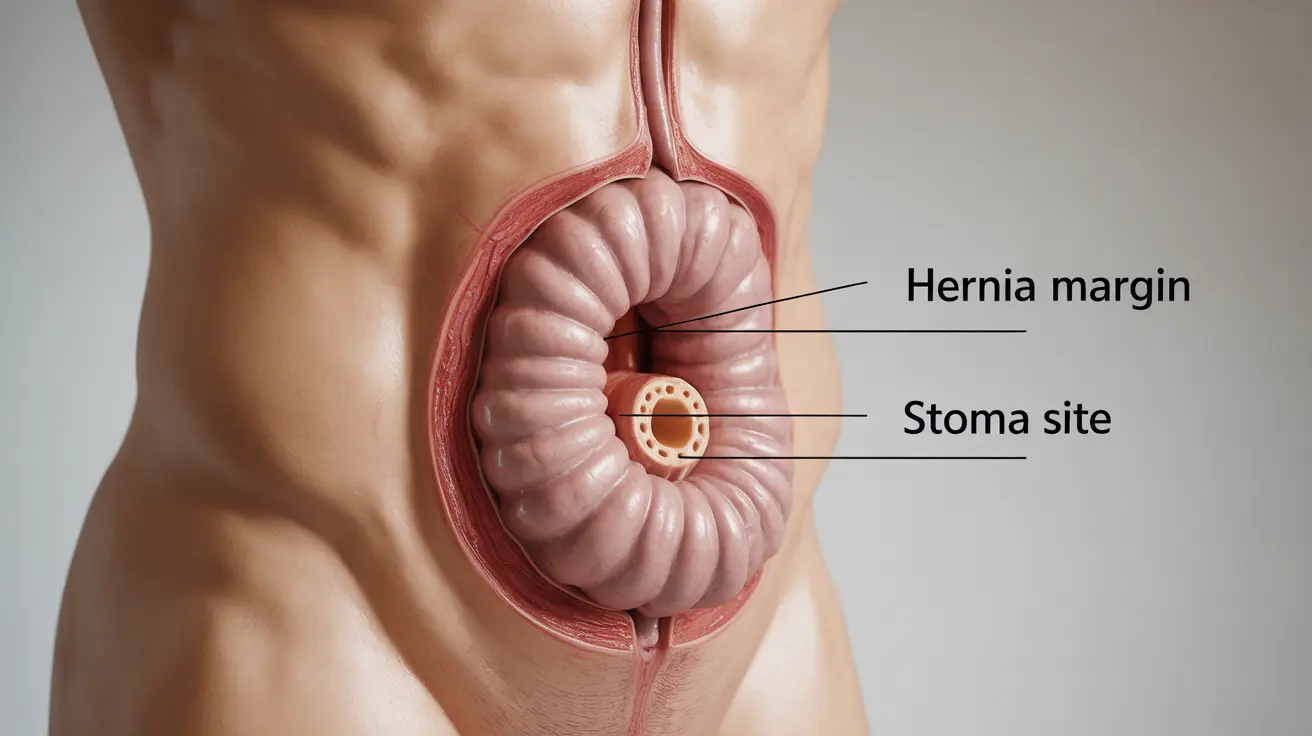A parastomal hernia is a common complication that can occur after ostomy surgery, affecting many individuals who have undergone this life-changing procedure. This condition develops when part of the intestine or abdominal tissue bulges around the stoma site, creating challenges for ostomy care and potentially affecting quality of life.
Understanding the signs, causes, and treatment options for parastomal hernias is crucial for both prevention and management. This comprehensive guide will help you recognize symptoms early and make informed decisions about your care.
What Is a Parastomal Hernia?
A parastomal hernia occurs when abdominal contents protrude through the weakened muscle layers around a stoma. The stoma is the surgically created opening in the abdomen where waste products exit the body into an ostomy bag. These hernias can vary in size from barely noticeable to quite large and may become more prominent when standing or coughing.
Recognizing the Signs and Symptoms
Early detection of a parastomal hernia is essential for proper management. Common indicators include:
- A visible bulge around or under the stoma
- Changes in the size or shape of the stoma
- Difficulty fitting ostomy appliances
- Discomfort or pain around the stoma site
- Problems with ostomy bag adhesion
Risk Factors and Causes
Several factors can contribute to the development of a parastomal hernia:
Physical Factors
- Increased abdominal pressure
- Obesity
- Chronic coughing
- Heavy lifting
Surgical Factors
- Size of the surgical opening
- Technique used during stoma creation
- Emergency versus planned surgery
Treatment Options
Conservative Management
Non-surgical treatment options are often the first line of defense and may include:
- Custom-fitted support belts
- Specialized ostomy appliances
- Weight management
- Activity modifications
Surgical Intervention
Surgery may be necessary when conservative measures fail or complications arise. Surgical options typically include:
- Stoma relocation
- Mesh repair
- Laparoscopic techniques
- Direct suture repair
Prevention Strategies
Taking proactive steps can help reduce the risk of developing a parastomal hernia:
- Maintaining a healthy weight
- Using proper lifting techniques
- Wearing appropriate support garments
- Following post-surgery activity guidelines
- Regular exercise to strengthen core muscles
Complications and Emergency Signs
While many parastomal hernias can be managed effectively, some situations require immediate medical attention. Watch for:
- Severe pain
- Stoma color changes
- Inability to pass stool or gas
- Nausea and vomiting
- Significant swelling or hardness
Frequently Asked Questions
- What are the most common symptoms of a parastomal hernia, and how can I tell if I have one?
The most common symptoms include a visible bulge around the stoma, difficulty fitting ostomy appliances, and discomfort around the stoma site. You may notice the bulge becomes more prominent when standing or during physical activity. If you suspect a hernia, consult your healthcare provider for proper diagnosis.
- What causes a parastomal hernia, and what lifestyle or health factors increase my risk?
Parastomal hernias typically develop due to weakness in the abdominal wall around the stoma. Risk factors include obesity, chronic coughing, heavy lifting, and poor surgical technique. Age, smoking, and certain medical conditions that increase abdominal pressure can also contribute to their development.
- How is a parastomal hernia treated—can it be managed without surgery, and when is surgery needed?
Many parastomal hernias can be managed conservatively with support belts, specialized appliances, and lifestyle modifications. Surgery becomes necessary when conservative measures fail, the hernia becomes very large, or complications develop such as obstruction or strangulation.
- What are the risks of leaving a parastomal hernia untreated, and when should I seek emergency care?
Untreated parastomal hernias can lead to complications including bowel obstruction, strangulation, or tissue death. Seek immediate medical attention if you experience severe pain, inability to pass stool or gas, significant swelling, or changes in stoma color.
- Are there ways to prevent a parastomal hernia, and can wearing an abdominal support belt help?
Prevention strategies include maintaining a healthy weight, avoiding heavy lifting, and using proper body mechanics. Abdominal support belts can indeed help prevent hernias by providing additional support to the abdominal wall, especially during physical activity. They should be properly fitted and worn as recommended by healthcare providers.




